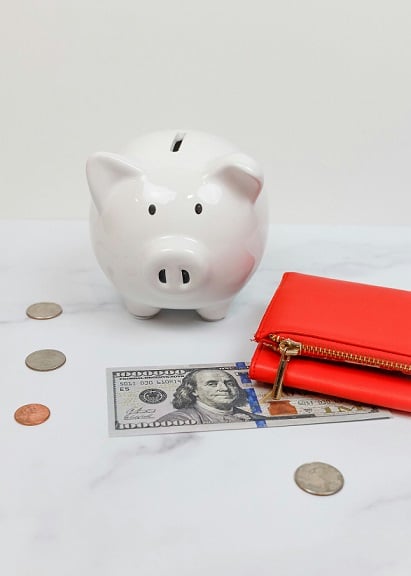How to Spend Less on Non-Food Groceries
Would you like to learn how to spend less on non-food groceries and other household items? I’ve thought about this for while and have gotten so much better with saving and budgeting my money. Learning to spend less on non-food groceries is easier when you focus on what you actually need versus what just looks appealing. I’ve found that setting clear priorities and avoiding impulse buys are key to cutting unnecessary expenses.

Many times I like to shop for househols items first before buying. This will give me a better idea of pricing, selection and value. Waiting also helps me to decide if I really want the item I’m thinking of buying and making better decisions with the money I budget.
By tracking my purchases and questioning each item’s value, I have been able identify where and what I overspend on, always with the focus of the worth of the item. This simple shift helps me save money without sacrificing important things or feeling deprived.
Understanding the difference between wants and needs keeps me disciplined. It also makes shopping less stressful and more intentional, which is a habit anyone can adopt. Now let’s learn how to spend less on non-food groceries.
Common Non-Food Groceries
Non-food groceries covers a large array of products that not only include household items, but items at other places you shop as well. It can include items from drugstores, pet stores auto parts stores and other items that you may not even think about, such as:
- Clothing and shoes
- Cosmetics and hair care products
- Monthly memberships
- Salon and spa treatments
- Household furnishings
- Sporting equipment
- Housekeeping and lawn services
- Concert tickets
- Rentals for parties
How to Spend Less on Non-Food Groceries By Budgeting
Non-food groceries can strain a budget more than your weekly food bill. Small, frequent expenses on items like streaming subscriptions, or apps often go unnoticed but can add up significantly.
I like to keep a close watch on these types of purchases, so that I can evaluate them over time. By evaluating, I mean looking back every 3 months to see if the money I’m spending is giving me enough value. And if you feel cheap doing this, having more money should help you get over that.
As for other household items, think about how much these items are really needed such as lawn services, care detailing,
Identifying Essential vs. Discretionary Items
Separate essentials, such as food, car maintenance, and living expenses from discretionary spending like luxury items or frequent dining out.
Ask myself if each non-food purchase is needed immediately or can be delayed or removed. Delaying purchases gives you time to think about how much you want the item and make adjustments to your budget.
Here’s a simple list to evaluate items:
- Essential: Needed for daily life or work (e.g., soap, work clothes)
- Discretionary: Non-urgent and replaceable (e.g., new shoes beyond necessity, gadgets)
By focusing on trimming discretionary spending, I maintain necessary comfort and utility without overspending.
Budgeting Strategies for Non-Food Purchases
Controlling spending on non-food items requires clear limits and regular review. I focus on setting a specific budget and monitoring my purchases closely to avoid unnecessary expenses.
Creating a Dedicated Non-Food Budget
I start by calculating my total monthly income and subtracting fixed expenses like housing costs and utilities. From the leftover amount, I allocate a fixed sum solely for non-food items.
The budget includes categories such as clothing, entertainment, and household goods. I use a simple table to track these limits:
| Category | Monthly Limit |
|---|---|
| Clothing | $50 |
| Dining out | $150. |
| Hosting parties | $75. |
This method keeps me accountable and prevents overspending in any one area.
Tracking Non-Food Buying Habits
I record every non-food purchase immediately, either in a notebook or a budgeting app. This habit helps me see where my money goes and identify patterns.
After a month, I review the data to spot frequent impulse buys or recurring expenses that can be reduced or eliminated. Consistently tracking expenses builds awareness and keeps my spending aligned with the budget.
Smart Shopping Techniques
Saving money on non-food groceries requires a mix of strategic timing, price comparisons, and maximizing rewards. I focus on detailed research and using available tools to get the best deals without compromising quality.
Comparing Prices and Finding Discounts
I start by checking multiple retailers for the same product to find the lowest price. Online comparison sites and apps like Honey or CamelCamelCamel simplify this process by tracking prices across stores.
Discount codes and coupons are essential. I always look out for promotional offers on retailer websites or sign up for newsletters that provide exclusive codes
Here are 20 practical ways to spend less on non-food groceries (cleaning products, paper goods, toiletries, etc.)

- Buy in Bulk – Purchase larger quantities of household items like toilet paper, detergent, or soap, which often have a lower per-unit cost.
- Use Store Brands – Generic or store-brand products are usually cheaper than name brands and often work just as well.
- Clip Coupons – Use paper or digital coupons from newspapers, store apps, or coupon websites.
- Shop Sales & Clearance – Stock up on essentials when they’re on sale or clearance, especially for non-perishables.
- Join Loyalty Programs – Many stores offer discounts, points, or exclusive coupons for members.
- Buy Concentrated Products – Concentrated detergents or cleaners last longer and cost less per use.
- Make Your Own – DIY cleaners (using vinegar, baking soda, etc.) and even some personal care items can be much cheaper.
- Use Less – Follow recommended amounts for products like detergent or shampoo—most people use more than needed.
- Reuse & Repurpose – Use washable cloths instead of paper towels, or repurpose old t-shirts as rags.
- Skip Single-Use Items – Avoid disposable plates, cutlery, or wipes unless absolutely necessary.
- Compare Unit Prices – Check the price per ounce, sheet, or count to find the best deal.
- Shop at Discount Stores – Dollar stores, warehouse clubs, and discount chains often have lower prices.
- Buy Refills – Purchase refill packs for soap, cleaners, and other household items instead of new containers.
- Limit Variety – Stick to one brand or type rather than buying multiple options “just to try.”
- Avoid “Convenience” Sizes – Travel-sized or pre-packaged items are often much more expensive per unit.
- Sign Up for Subscriptions – Some retailers offer discounts for regular deliveries (just be sure you need them!).
- Share Bulk Purchases – Split large packs with friends or family if you don’t have storage space.
- Check Online Prices – Sometimes online retailers or apps offer better deals than brick-and-mortar stores.
- Use Cashback Apps – Apps like Ibotta or Rakuten give you money back on certain purchases.
- Stick to Your List – Plan ahead and avoid impulse buys by shopping with a strict list.